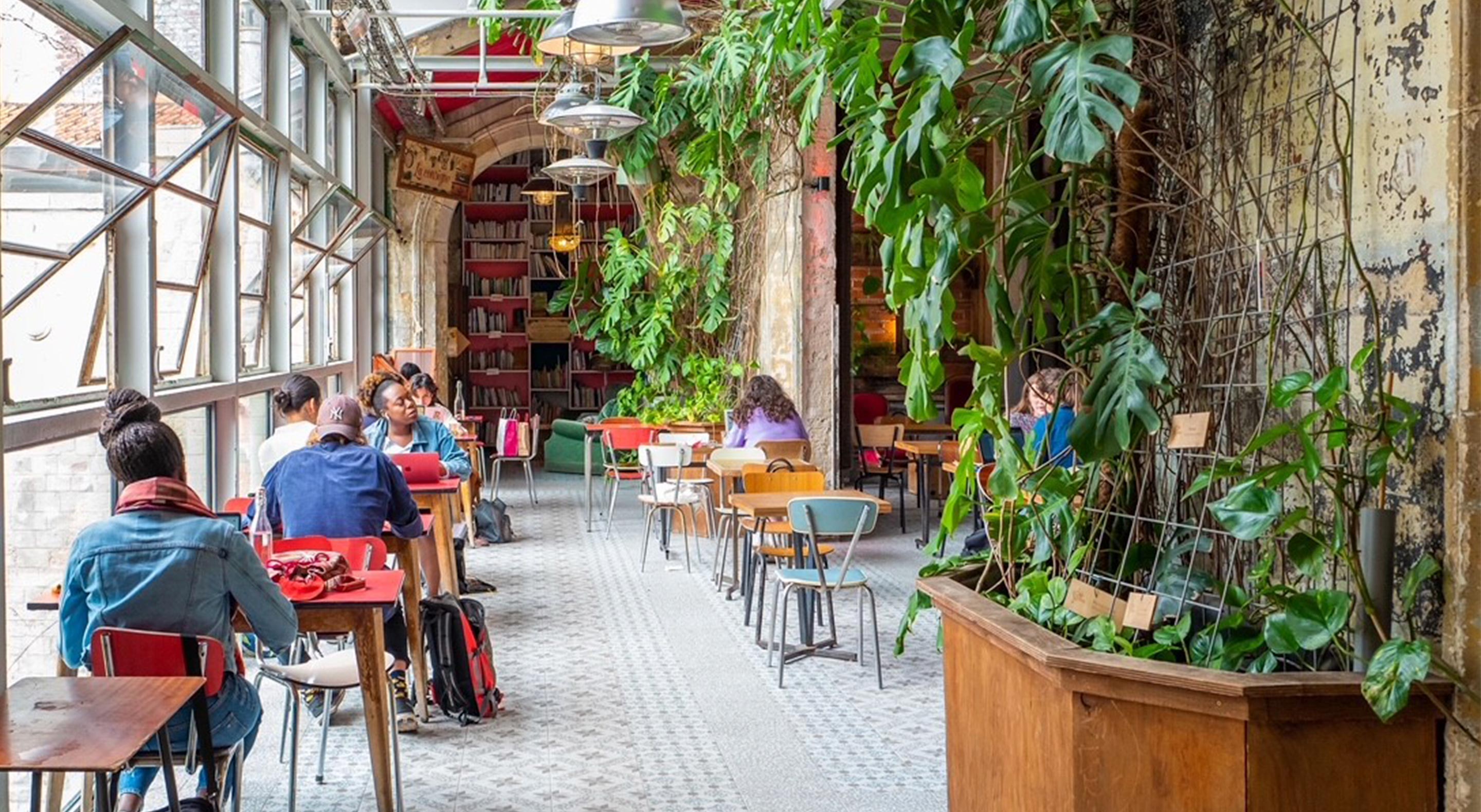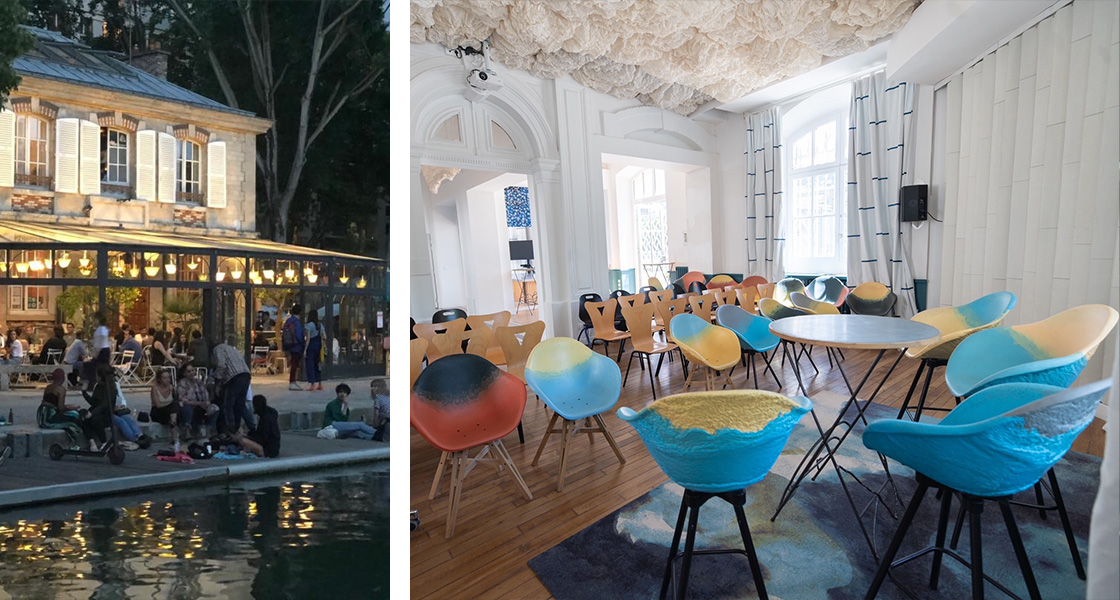Third places, driving the circular economy
Published on 5 August 2022

Third places thrive on the energy and commitment of all those who frequent them. Their creed? Embrace a people-first approach and offer new and more responsible ways of creating and consuming.
Third places are prolific, multi-faceted and diverse. “A co-working space with a cafe is rather like the foundation stone for any third place”, smiles Auriane Dumesnil, awareness project manager for Parisian association Les Canaux, figurehead of the circular economy in France. The concept was first coined in the USA back in the 1980s, but has since become a veritable catch-all term. Having emerged in opposition to the home and the office, which are the first and second places respectively, it initially designated places in which people could get together informally. A somewhat broad definition that enabled the Starbucks chain to define its stores as third places. Although it would be fair to say that the world can be put to rights over a coffee, the American firm falls a long way short of the twenty-first century’s third place ambitions.
People-focused projects
Third places can have different vocations and different types of hybridity. Either way, “their strong point is that they are wholly people-oriented,” comments Dumesnil. “The focus is on creating a space that not only makes people feel at home but is environmentally friendly, too.” There are co-working spaces that offer new ways of working and encourage interaction; digital third places set up in technology-poor regions with a view to helping people get together to learn; and even creative and innovative spaces set up to host FabLabs and workshops. Whatever the reasons behind their creation, each space is underpinned by a promise of fruitful cooperation and innovation. Against a backdrop of social transformation and the emergence of new individual aspirations, the majority of these venues also advocate for the environment. Take, for example, Sinny&Ooko, a Solidarity-based Enterprise of Social Utility based in France. It has embraced the task of helping drive the environmental transition on a local level by setting up a “campus” that offers help and advice to other third place projects, which are themselves keen to promote the tools that will help build a more sustainable society. In Paris, it manages both La Re-cyclerie and the Cité Fertile, whose names alone speak volumes about their underlying aspirations.

Reinvesting, reusing, upcycling
The two groups have set up home in old railway stations in Paris and the surrounding region. Taking over abandoned, dormant spaces is often the very first thing these socially-minded groups and organisations do, in an act that is not just purely economic but highly symbolic, too. The Buenos Aires fish market occupied a 1930s building that closed in 1983, only reopening in 2001 for the inauguration of the “Pescadito”, the building that founded the MDC, the city’s Metropolitan Design Centre. Today, the site is home to a business incubator, an auditorium, exhibition spaces, a FabLab, leatherwork, sewing and furniture-making workshops, and a toy library, giving it a pivotal role in city life once more. The spaces may sometimes only be occupied for a relatively short time, but it is invariably long enough to make an impact, such as at the Hôpital Saint-Vincent de Paul in the 14th arrondissement of Paris, which was home to Les Grands Voisins for almost 5 years. The venue hosted artists, artisans and socially and ethically responsible firms, and almost all the facilities were created using reclaimed materials sourced from demolition sites. This particular third place continues to serve as a template for numerous projects that are being developed around the country today.
Keeping the circular economy circulating
“Lots of third places are located in derelict areas or are temporary spaces, and the idea is to wholly reflect the values they uphold. It is really important to use as many upcycled furnishings as possible that have been sourced locally to support the circular economy”, confirms Dumesnil. Les Canaux is based in the former administrative offices for the Parisian canal network on the edge of the Bassin de la Villette. Backed by Paris City Council, the space is so much more than a simple showcase to promote the circular economy in the furnishings and interior design sphere. 95% of the waste generated during the renovation process - even including the plaster - was recycled or upcycled by some twenty firms involved in the circular and social economy, and the space has been fitted out with furnishings made purely from reclaimed materials. The association puts on exhibitions, sources products and promotes upcycling, and has even compiled a catalogue of products and manufacturers. “Contacting one person for chairs and another person for tables demands far more research, so we’ve taken care of that by putting together an extensive list of local firms and start-ups“, explains the young woman responsible for raising firms’ awareness about such topics. In 2019, Les Canaux launched the “Circular Furnishings Booster” scheme, notably backed by industry professionals who are members of French furniture association l’Ameublement français. It is a scheme that supports manufacturers who are keen to integrate reuse and upcycling into their economic model. Both of these local players will be at Maison&Objet in September to showcase their new projects and put on an exhibition as part of the trade fair’s Work itinerary.
“Firms often have huge amounts of unused resources just lying dormant in waste and offcuts, and this shows them that they can actually be of value”, adds Dumesnil. After primarily attracting start-ups, the scheme has now begun garnering interest from commercial-scale SMEs working in the furnishings industry. Nowadays, extensive spaces such as offices, institutions and public access buildings can, indeed, be furnished and fitted out using recycled and upcycled materials, safe in the knowledge that all those materials fully conform to the stringent safety standards required. For the 2024 Olympic Games that are set to be held in Paris, members of the local Olympic Committee have even been out and about looking for inspiration and stocking up on documentation. And where did they head? Les Canaux.